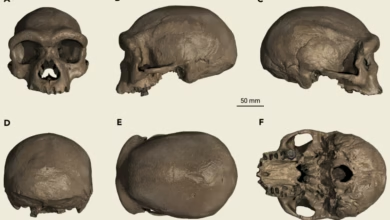
▼ Summary
– Lead poisoning affected hominid ancestors during the Pleistocene, predating modern human history by millions of years.
– Researchers found evidence of dangerous lead exposure in the teeth of fossil apes and hominins dating back nearly 2 million years.
– Tooth enamel analysis revealed episodic lead exposure in 71% of sampled hominin teeth, including early Homo, Australopithecus, and Neanderthals.
– Enamel forms in layers like tree rings, recording lead levels from early childhood, indicating periods of high lead in the bloodstream.
– The study controversially suggests that pervasive lead exposure may have influenced the evolutionary history of hominins.
Evidence of lead poisoning has been discovered in the teeth of ancient hominins, pushing back the timeline of human exposure to this toxic element by nearly two million years. This groundbreaking research suggests that our early ancestors regularly encountered dangerous levels of lead, challenging the long-held belief that significant lead contamination only began with human industry in recent millennia.
A team of researchers, led by paleoanthropologist Renaud Joannes-Boyau from Southern Cross University in Australia, analyzed minuscule samples of enamel and dentin from 51 fossil teeth. Their findings reveal that many of these early apes and hominins were exposed to lead repeatedly during their formative years, sometimes at concentrations considered hazardous.
Tooth enamel develops in sequential layers, much like the growth rings of a tree, capturing a chemical record of an individual’s early life. Each layer corresponds to a specific period, typically within the first six years, and preserves traces of elements present in the bloodstream at that time. Dark bands observed within the enamel indicate periods when lead levels were elevated.
The study detected clear signs of episodic lead exposure in 71 percent of the hominin teeth examined. Affected specimens included not only 100,000-year-old Homo sapiens from China and 250,000-year-old Neanderthals from France, but also much older hominins from South Africa dating between one and two million years ago. Among these were early members of the genus Homo, as well as the related species Australopithecus africanus and Paranthropus robustus.
These results demonstrate that lead exposure is not a uniquely modern or even Roman-era phenomenon. Instead, it appears to have been a persistent environmental challenge throughout much of hominin evolutionary history. The pervasive presence of this toxic metal may have exerted selective pressures that influenced human development over deep time.
(Source: Ars Technica)

